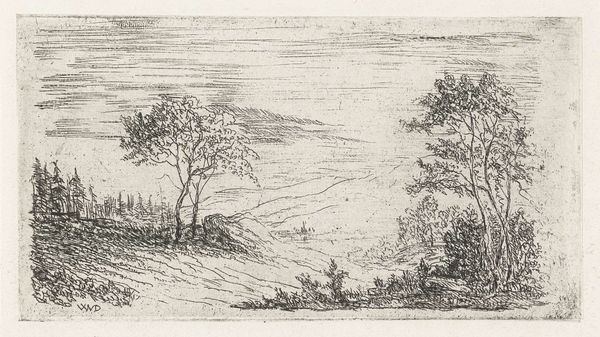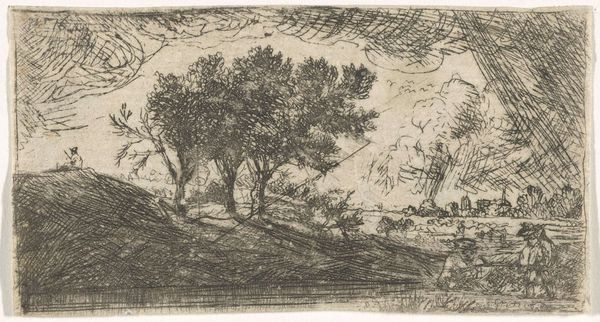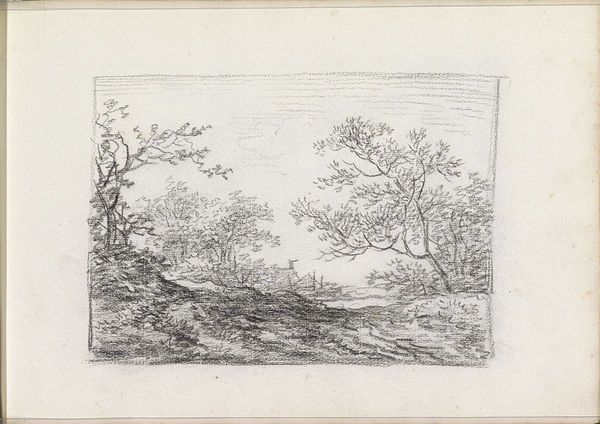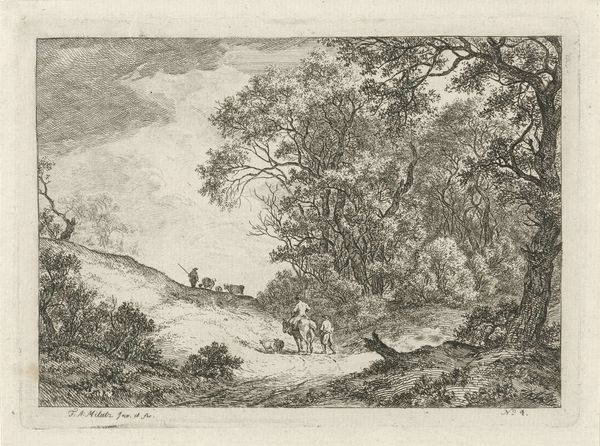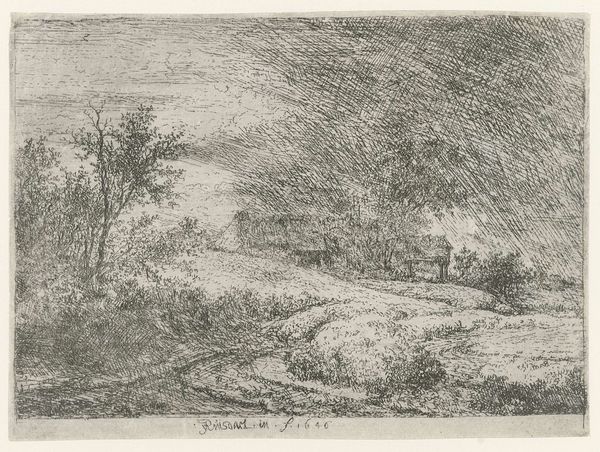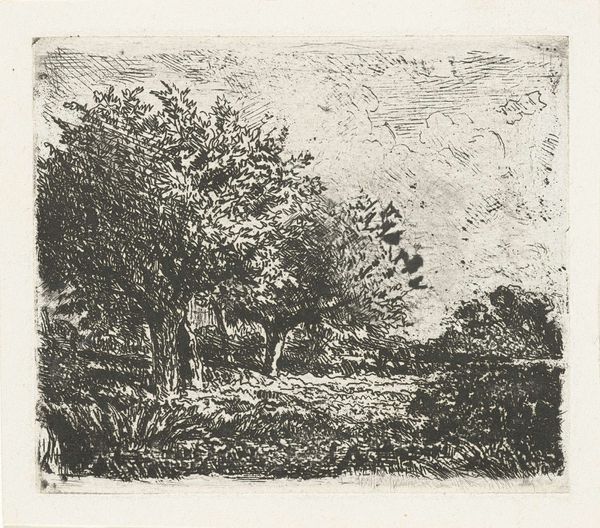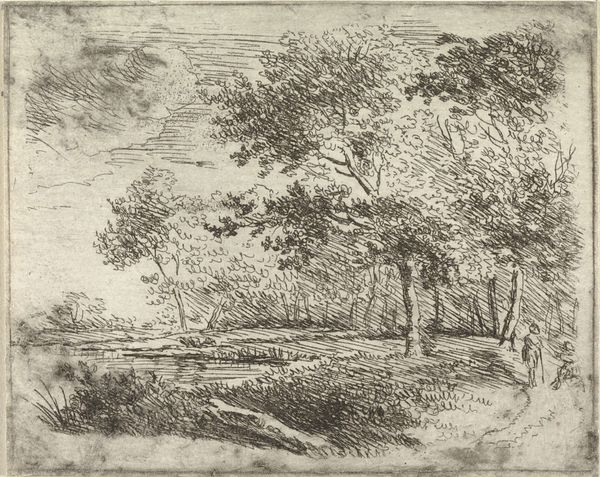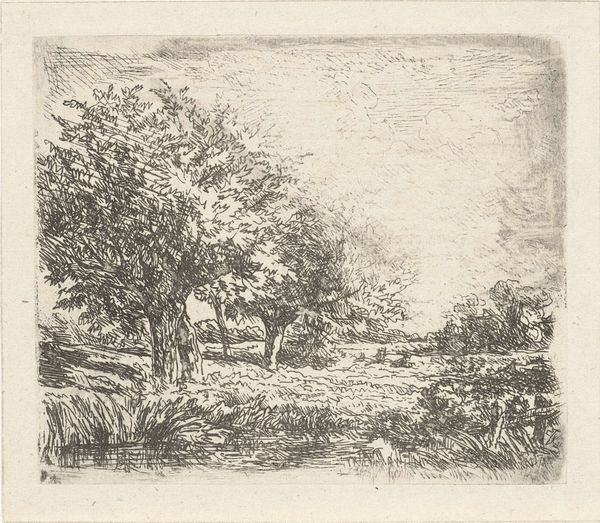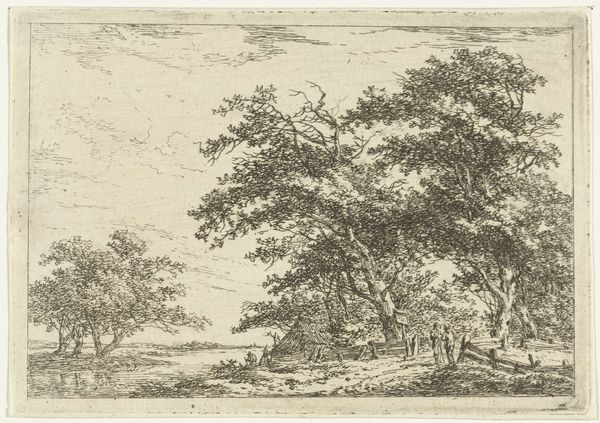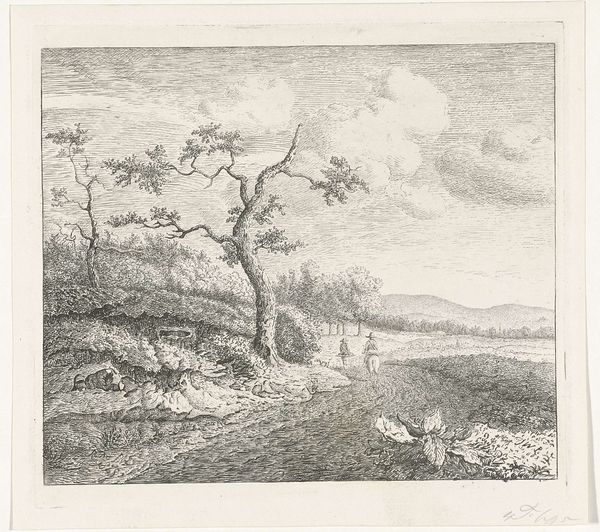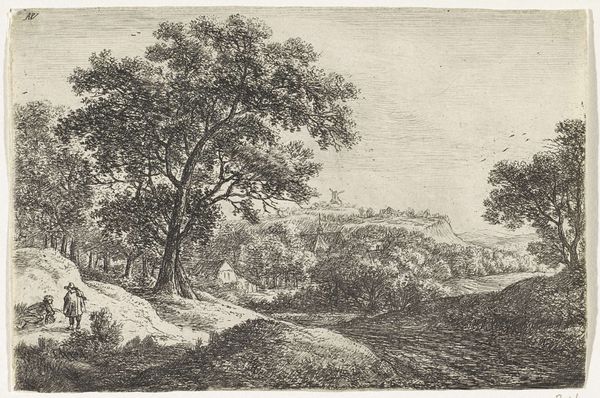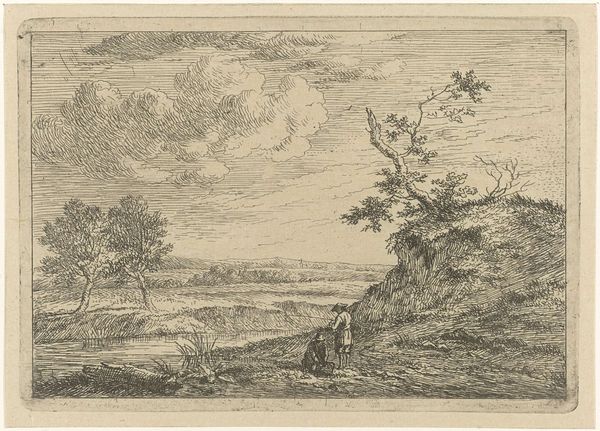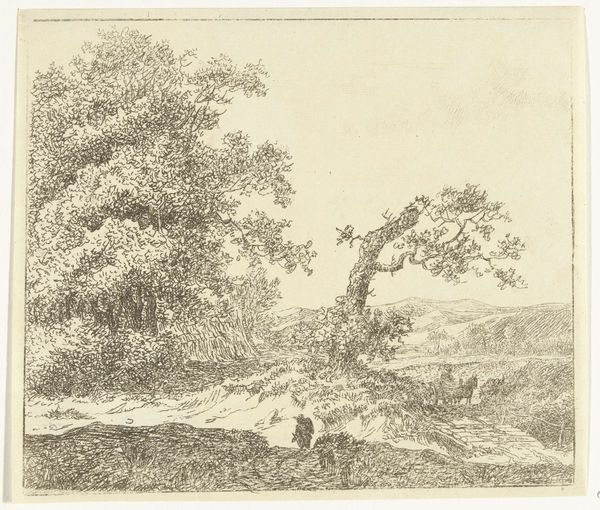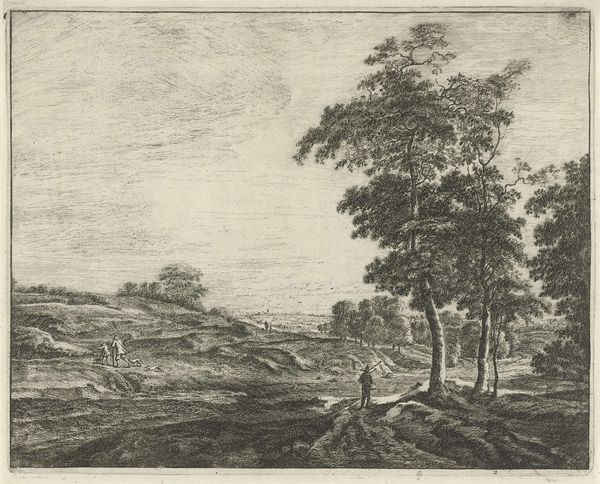
drawing, print, etching
drawing
etching
pencil sketch
landscape
geometric
romanticism
line
Dimensions: height 69 mm, width 125 mm
Copyright: Rijks Museum: Open Domain
Editor: This is "Heuvellandschap" by Willem Matthias Jan van Dielen, dating from 1815 to 1867. It's an etching, so the lines are incredibly delicate, giving the whole landscape a dreamlike quality. It feels… nostalgic, somehow. What do you see in this piece that stands out from a historical perspective? Curator: The artist seems to be deliberately engaging with the picturesque movement of the time, which saw artists searching for "natural" scenes that fit certain aesthetic conventions. It wasn't just about representing nature; it was about framing it in a way that was considered pleasing, even sublime, by the educated classes. Do you notice how the composition uses framing elements like trees on either side to draw your eye to the central vista? Editor: Yes, the trees definitely create a sense of depth. And I'm assuming that was quite intentional on van Dielen’s part? Curator: Absolutely. Think about the role these landscapes played in shaping national identity. The 'Heuvellandschap', or "hill landscape" served as symbols of Dutch territory, its specific character. The very act of representing it, then reproducing and circulating those images as prints, helped to create a sense of collective belonging amongst a broader public. Does that shift your reading of the artwork at all? Editor: Definitely! It makes me wonder who these images were intended for, and how they were consumed. Not just as pretty pictures, but as a kind of...propaganda, perhaps? Curator: Exactly! Art rarely exists in a vacuum. It's shaped by the society it's produced in, and in turn, helps shape that society. Editor: That’s such a useful framework for thinking about art; thanks so much! Curator: My pleasure! Hopefully, we can both think more critically now.
Comments
No comments
Be the first to comment and join the conversation on the ultimate creative platform.
